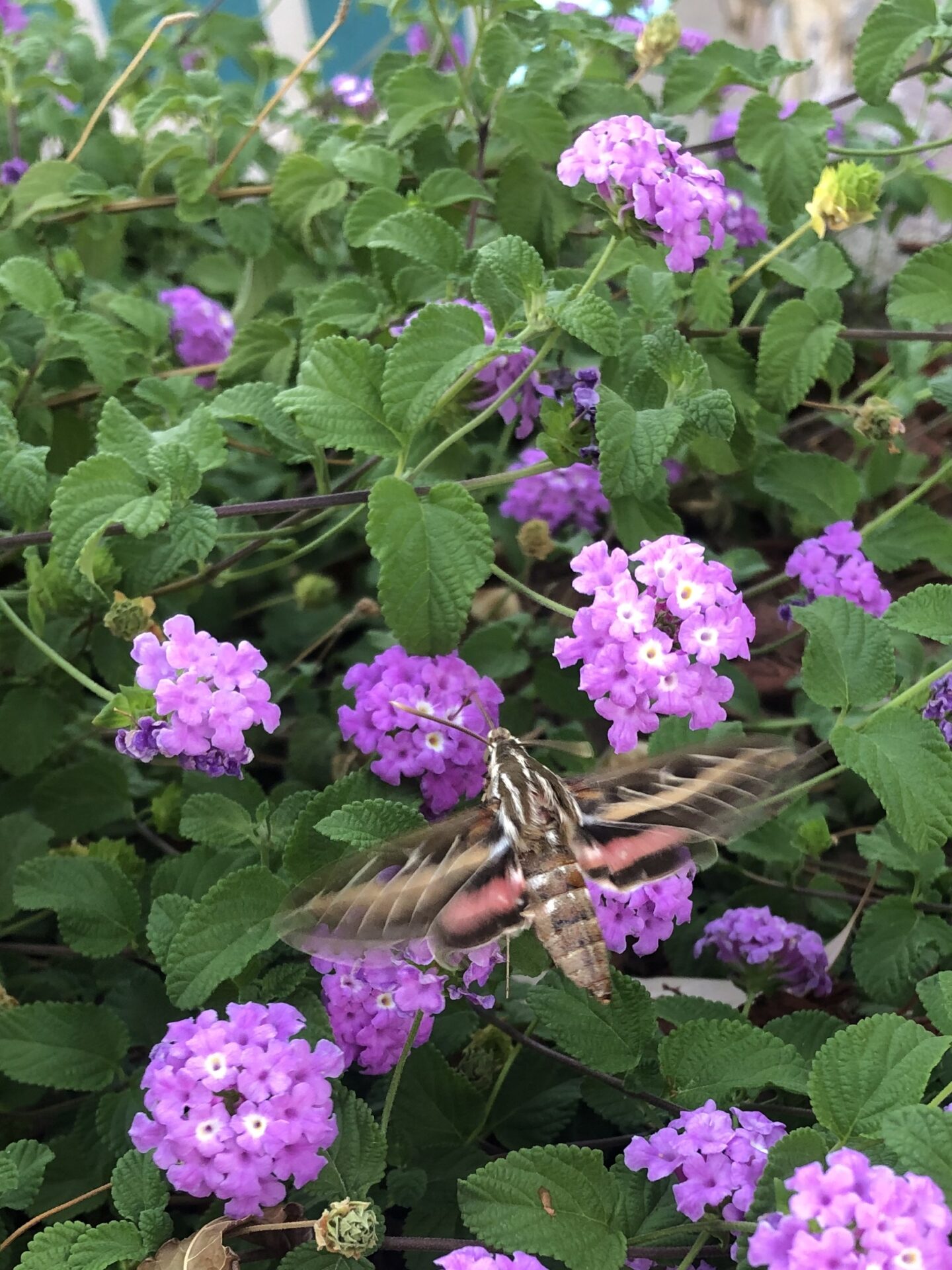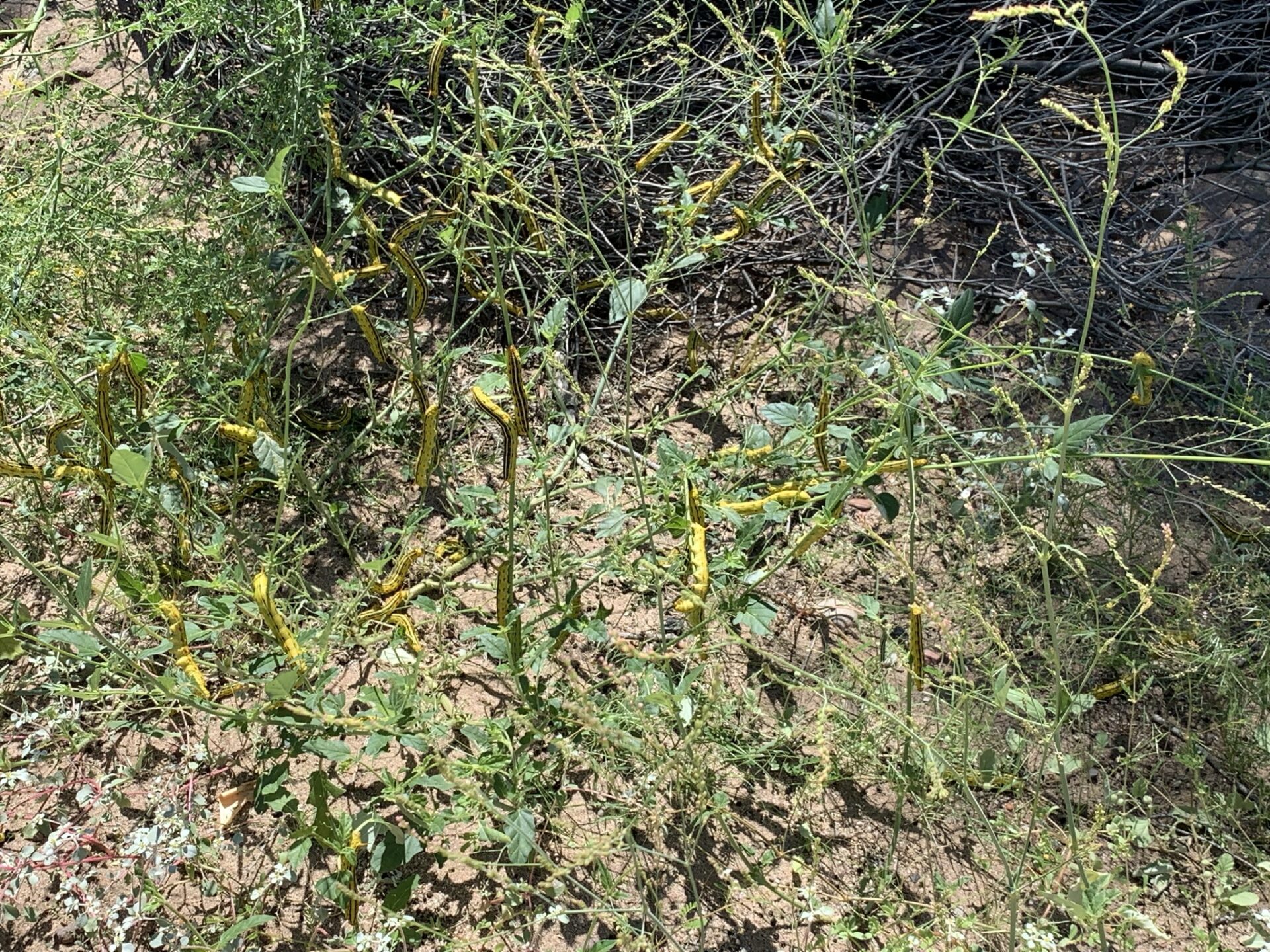Many living in the Phoenix area will have noticed large green or yellow caterpillars in their yards, green spaces or along roads a few weeks ago. These are the caterpillars of the white-lined sphinx moth. While they may seem like unwanted visitors, there are several reasons to celebrate them!
What are they?
White-lined sphinx caterpillars feed on a wide variety of plants. In this area, they largely feed on the native spiderling plants (Boerhavia spp.) that pop up in yards and roadsides when we have sufficient rain. These plants are considered weeds, and are often removed from cultivated spaces. These voracious eaters just took care of some your yard work!
In reality, the greatest benefit of the white-lined sphinx is in the adult stage. The moths are excellent pollinators. They can be observed flitting along from flower to flower, usually around dusk. They can actually be observed during the daytime — the last time you would expect to see a moth. They have a long proboscis (straw-like mouthpart used to sip nectar), and favor long flowers, particularly in the nightshade family (Solanaceae).
Will I see them again?
Phoenix has a population of these caterpillars every year, but this one was particularly noticeable. The amount of rain we received quickly in August brought out the moths and the plants. The caterpillars were much more successful this year due to the abundance of plant material to eat.
By now, many of the caterpillars have moved onto the next stage and formed their cocoons. They burrow underground, and then rely on temperature and moisture cues to time their emergence.
Depending on the weather, we may see a flurry of these adult moths in a few weeks. Take a walk at the Garden, your own garden or neighborhood around dusk and look for these proficient flyers. They are particularly fast and hover with fast beating wings as they feed on flowers. They are larger than the average moth, or really anything you see that time of day. With their fast and hovering flight, they are often compared to hummingbirds.
Will they hurt my garden?
Like many butterflies and moths, the white-lined sphinx moth caterpillars have host plants they require or prefer to eat. Most of those are not cultivated plants (evening primrose being an exception) and so you should not view these as a threat to your garden. Instead, consider the pollination benefits of the adults. These caterpillars and moths are also food for many vertebrates, like insectivorous birds, that you may want to see in your garden.
Why should I celebrate these moths?
We love to celebrate nature. Small animals and weed plants are often overlooked. Here we have an example of a caterpillar that is extremely visible, easy to find and highlights the benefit of one of our common desert weeds. The caterpillars are not venomous and can be fun for kids to explore. Just beware their defense mechanism if you pick them up: regurgitating their lunch.



